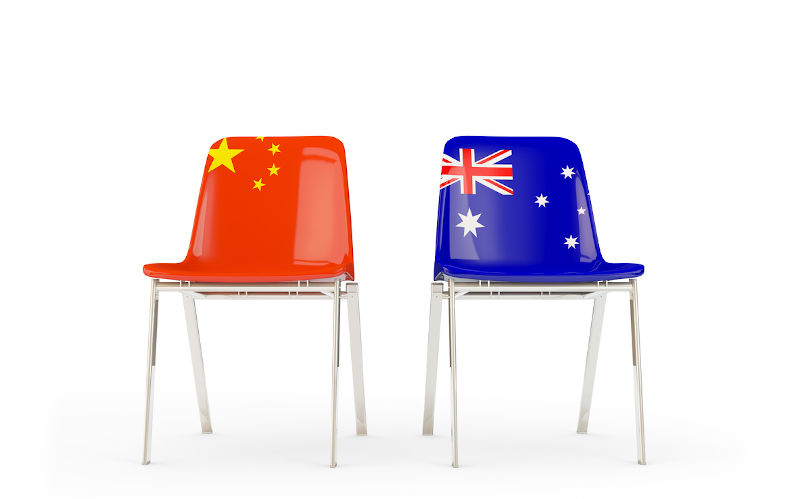A close encounter between Australian and Chinese military aircraft over the South China Sea has resulted in mutual accusations of provocative and dangerous behaviour and raised many questions. Here is what we know –and what we need to know before drawing conclusions.
On 5 June, the Australian Defence Department stated that ten days earlier on 26 May ”a Royal Australian Airforce (RAAF) P-8A maritime surveillance plane was intercepted by a Chinese J-16 fighter aircraft during a routine maritime surveillance activity in international airspace in the South China Sea region”. It concluded the statement by saying that it ”would not be commenting further on this matter”.The Australian Defense Minister Richard Marles said the Chinese aircraft flew very close to the P-8A , released flares , and then cut across its nose and released a “bundle of chaff” that was ingested by the P-8A’s engines. Australia said this was “dangerous” and “threatened the safety of the aircraft and crew”. Mr. Marles added that ‘he could reveal little’ although his government ”had expressed its concerns to China through appropriate channels”.
China’s Defence Ministry responded that “the Australian military aircraft seriously threatened China’s sovereignty and security and the countermeasures taken by the Chinese military were reasonable and lawful.”
To determine the “right’ and ‘wrong’ of this incident we need to know the flight path of the Australian P-8A, the exact location of the incident, what it was doing and why? Australia’s reluctance to make these details known—especially the route and location of the incident–and the delay of ten days in reporting the incident raises suspicion. If it occurred in “international air space” then it would be in its interest to specify these details.
The absence of such information forces some deductive reasoning. According to anonymous sources (personal communication), the RAAF P-8A flew out of Clark Air Base in the Philippines and headed directly to the Paracels—claimed by both China and Vietnam. It was intercepted by a Chinese J-16 jet fighter based on Woody Island in the Paracels.
If the P-8A flew over China’s claimed high tide features or its 12 nautical mile (nm) territorial sea around each, then it clearly violated China’s claimed sovereignty.
Otherwise it gets a bit murky. China claims baselines enclosing the entire island group and considerable waters within them that lie beyond 12 nm from any of the features. According to the UN Convention on the Law of the Sea (UNCLOS) only archipelagic states can draw such closing baselines around an island group. Archipelagic State “means a State constituted wholly by one or more archipelagoes and may include other islands.” As continental states, China and Vietnam cannot establish archipelagic straight baselines around islands belonging to them. The proper baseline would be the low water line of each island and rock.
That means that if the Australian P-8A was over waters enclosed by the claimed baselines but not within 12 nm of high tide features then Australia can claim that it was in “international airspace”.
The next question is what was it doing and why? Even if it was flying over China’s claimed Exclusive Economic Zone (EEZ), there are some restrictions on its behaviour. UNCLOS stipulates that a user state must pay due regard to China’s rights and duties in the EEZ.
China had just completed a large military exercise in waters south of Hainan Island for which it issued a navigation warning. The likely mission of the Australian P-8A was to gather intelligence on Chinese warships and perhaps their land to sea communications while returning to their bases. China has a very sensitive naval base at Yulin on southern Hainan that harbours some of its nuclear-powered nuclear-capable submarines that may have been participating in the exercises.
P-8As are armed with torpedoes, Harpoon anti-ship missiles and other weapons. Did the Australian plane ‘paint’ China’s surface ships with its own fire control radar or come closer than the surface ships thought ‘safe’?
The P-8 can drop sonobuoys to gather information on the performance capabilities and signatures of surface vessels and to locate and track submarines. The main advantage of submarines is stealth. If the P-8A was attempting to ‘out’ a submarine—particularly a nuclear-powered nuclear-capable one, China may have seen that as a threat, or at the very least an ‘unfriendly’ act. This may have been what happened in the ‘laser incident’ in Australia’s northern EEZ in February when a Chinese warship fired a laser at an Australian P8A that was dropping sonobuoys .
China probably considers deployment of sonobuoys as an abuse of rights under UNCLOS because ‘marine scientific research’ in its EEZ requires its consent. Australia—like the U.S. –may claim that dropping sonobuoys is’ military surveying’ and thus does not require consent. But China can point to UNCLOS Article 258, which stipulates that “the deployment and use of any type of scientific research installation or equipment [emphasis added) in any area of the marine environment shall be subject to the same conditions as … the conduct of marine scientific research in any such area” (in this case China’s EEZ).
The behaviour of the Chinese jet fighter was dangerous. But was it provoked? Until the questions of ‘where was the P8A’ and ‘what was it doing’ are satisfactorily answered, it is not wise to jump to conclusions.
This piece first appeared in the Asia Times.
Mark J. Valencia is an internationally known maritime policy analyst focused on Asia and currently Adjunct Senior Scholar at the National Institute for South China Sea Studies, Haikou, China. He is also a Non-Resident Fellow at the Huayang Institute for Maritime Cooperation and Ocean Governance, Sanya , China.

